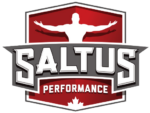BY SEAN DEL BEN, MKIN, CSCS, FMS LVL.2, FRC

Vince Carter had decent explosiveness
Explosive training will develop athletic attributes such as sprinting, and the vertical jump, amongst others.
Today, more than ever, athletes are at risk to be confused as to which methods will be the most effective for improving their explosiveness in their field of play. With explosive training gimmicks such as Air Alert, and the false hope delivered from plyometric shoes, athletes of all ages are being left injured, weak, and in the end, simply not explosive. Unfortunately, athletes are being led astray from the basic science that truly will GUARANTEE results.
As can be found in the book, ’Supertraining’, there are four basic skill-sets that must be addressed in order to fulfill your quest for explosiveness.
1) The general ability to display explosive strength
2) The maximum strength of the athlete
3) The ability of the muscles to rapidly display starting strength
4) The ability of the muscles to quickly develop acceleration strength
Not to leave you hanging, these skills can be defined as the following:
Explosive strength refers to the ability to produce maximal force in a minimal time
Maximum strength refers to the athlete’s strength potential. It is a measure of the maximal voluntary isometric muscular force which can be produced.
Starting strength refers to the ability to build up working force as rapidly as possible once muscle contraction has begun and is produced under conditions of isometric muscle action
Acceleration strength describes the ability of the muscle to build up force as rapidly as possible under dynamic conditions once the contraction has already begun
One more skill that can possibly be classified as a sub-category to explosive strength, is reactive strength. Reactive strength refers to the ability of the agonist muscle to quickly switch from an eccentric contraction to a concentric contraction using the elastic energy of the stretch to increase the power of the subsequent contraction.
Now that the definitions are out of the way, you may be wondering what exercises to do in order to develop each of these explosive training skills. Below I have listed one exercise for each skill, along with videos’ displaying examples of other options.
EXPLOSIVE STRENGTH: SQUAT JUMP
For sports that only require you to move your own bodyweight, perform with no added weight or a light load. If you are involved in a sport that requires moving an external load, use a higher load. To add load, use a weighted vest, dumbbells, or a barbell.
MAXIMUM STRENGTH: BACK SQUAT
PERFORM THE BACK SQUAT WITH >/= 85% OF YOUR ONE REP MAXIMUM. COMPLETE NO MORE THAN FIVE REPETITIONS PER SET, AND ALLOW FOR A RECOVERY TIME OF AT LEAST THREE MINUTES.
STARTING STRENGTH: PIN SQUAT
SET THE SAFETY PINS ON THE RACK TO A HEIGHT THAT WILL ALLOW YOUR THIGHS TO BEGIN THE MOVEMENT PARALLEL TO THE FLOOR. OCCASIONALLY, YOU MAY RAISE THE PINS TO BEGIN THE MOVEMENT IN A SEMI-SQUAT POSITION.
ACCELERATION STRENGTH: DUMBBELL SNATCH
SELECT A WEIGHT THAT WILL ALLOW YOU TO EXERT FULL FORCE WITHOUT HAVING TO SLOW THE WEIGHT DOWN.
REACTIVE ABILITY: DEPTH JUMPS
SELECT A DROP HEIGHT THAT ALLOWS FOR THE SHORTEST GROUND CONTACT TIME POSSIBLE. DON’T GET OVERZEALOUS WITH THE VOLUME ON THIS HIGHLY INTENSE DRILL.
Remember to ensure that you or your clients are fit to train before beginning any explosive training program. Most importantly, see a qualified strength & conditioning professional to make sure you can perform, or coach these exercises correctly!
Please e-mail me today at [email protected] if you have any questions on how to integrate these skills into your program.
